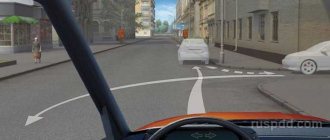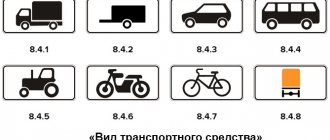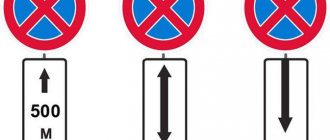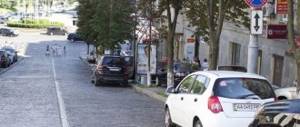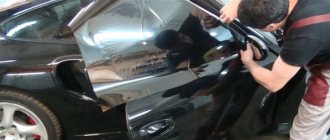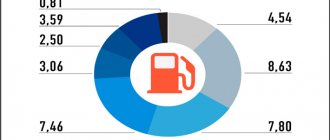Vehicle operating rules
Vehicle malfunctions, in the presence of which its operation is prohibited, are explained in the Decree of the Government of the Russian Federation of October 23, 1993 N 1090 “On traffic rules”.
However, it is worth distinguishing between technical malfunctions of the car, which are subject to a categorical ban on further use of the vehicle, and breakdowns, if detected during the movement, it is possible, taking additional precautions, to continue driving to the car’s parking lot or to a service station.
The list of damages is very impressive and therefore it is important to understand the difference between the operation and movement of vehicles - not every breakdown causes the need to tow the vehicle, but if there are defects for which the movement of the vehicle is prohibited, administrative responsibility is imposed.
There are certain rules for operating a vehicle, in which the driver or the responsible person releasing the vehicle onto the line must ensure that there are no malfunctions before operating the vehicle. Methods for identifying breakdowns and defects are regulated by GOST R 51709-2001 “Motor vehicles. Safety requirements for technical condition and verification methods." Of course, when driving in working order, no one is immune from breakdowns while driving.
Traffic rules stipulate that if a defect or breakdown is detected, the driver must stop and try to fix the problem before continuing to use the car, and if this is not possible, the vehicle must be towed to the place of repair work using a tow truck, or using a partial load of the vehicle.
External lighting devices
3.1. The number, type, color, location and operating mode of external lighting devices do not meet the requirements of the vehicle design.
Note. On discontinued vehicles, it is permitted to install external lighting devices from vehicles of other makes and models.
3.2. Headlight adjustment does not comply with GOST R 51709-2001.
3.3. External lighting devices and reflectors do not work in the prescribed mode or are dirty.
3.4. Light fixtures do not have lenses or use lenses and lamps that do not match the type of light fixture.
3.5. The installation of flashing beacons, the methods of their fastening and the visibility of the light signal do not meet the established requirements.
3.6. The vehicle is equipped with:
- in front - lighting devices with lights of any color other than white, yellow or orange, and retroreflective devices of any color other than white;
- at the rear - reverse lights and state registration plate lights with lights of any color other than white, and other lighting devices with lights of any color other than red, yellow or orange, as well as retroreflective devices of any color other than red.
Note. The provisions of this paragraph do not apply to state registration, distinctive and identification marks installed on vehicles.
Malfunctions in which a ban on the operation of the vehicle is imposed by the legislation of the Russian Federation.
In total, there are five malfunctions in which the use of a car or other vehicle is strictly prohibited. These breakdowns pose a threat to all road users; they are defined in the second paragraph of the traffic rules and contain the following list:
- malfunction of the brakes (violation of the tightness of the brake drive, that is, loss of brake fluid followed by the absence of brakes, breakdown of the pressure gauge of the pneumatic or pneumohydraulic systems);
- defects and breakdowns of the steering (the gap in the system for passenger cars is more than 10 degrees, the power steering is broken, the connections between the parts are not secured using a preset method, the control parts have moved, or the steering column locking does not function);
- breakdown of the towbar (towbar) - in this case, movement of the vehicle with a trailer is prohibited;
- absence or malfunction of the lighting system (headlights and tail lights) - cannot be used in the dark or in conditions of limited visibility, but in the daytime, under normal lighting, you can continue moving to the garage or workshop, taking special care;
- Windshield wiper malfunction - if it is necessary to use it (precipitation).
Steering
2.1. The total play in the steering exceeds the following values:
Total play no more than (degrees)
- Passenger cars and trucks and buses created on their basis - 10
- Buses – 20
- Trucks - 25
2.2. There are movements of parts and assemblies not provided for by the design. Threaded connections are not tightened or secured in the correct manner. The steering column position locking device is inoperative.
2.3. The power steering or steering damper provided by the design is faulty or missing (for motorcycles).
Car admission procedure.
This procedure is described in detail in the section of the traffic rules of the same name - the vehicle must be registered in the prescribed manner, have an insurance policy and a diagnostic card (a valid technical inspection form).
The period of inspection of a passenger car is determined by its age:
- new vehicle – 5, 7, 9 years from the start of using the car;
- A car that has been used for more than ten years requires regular inspection (every year).
Immediately before starting to operate the car, the driver is obliged to inspect the car or other vehicle to identify any malfunctions ; if eliminated, you can continue driving the vehicle.
Brake system
If this norm is spelled out in the traffic rules rather vaguely (the working vehicle is faulty), then the Appendix lists specific technical malfunctions of the brakes for which the operation of the car is prohibited:
- The braking efficiency of the car does not correspond to the indicators prescribed in GOSTR 051709-2001. We are talking about a working technical specification (there can be 4 of them: parking, spare, auxiliary). Among these indicators is the length of the braking distance, and it is not identical to the track of the car’s wheels left after they are blocked, since the tires do not block immediately. Checking the effectiveness of brakes is carried out on a special stand, and the methodology for such tests is described in the above-mentioned GOST.
- The brake drive is depressurized. This term refers to a violation of the integrity of vehicle parts, expressed by the presence of leaks of fuel fluid from the main and working cylinders, as well as from the places where hoses and tubes interface with vehicle parts. The tightness of the brakes must comply with GOST 023181-78.
- If, as a result of loss of tightness, the level of pressure drop in a pneumatic/hydropneumatic type vehicle with the power unit not working exceeds 0.05 MPa within 0.25 hours after fully pressing the brake pedal with full force.
- The pressure gauge included in the pneumatic/hydropneumatic type vehicle is inoperative.
- The parking brake does not hold the vehicle in place. For fully equipped buses/passenger cars this is a slope with a gradient of up to 23%, for equipped trucks – 31%. The parking brake is tested on a stand; testing is also allowed in road conditions (overpass).
List of faults that allow you to continue driving.
There is a list of faults, if present, the use of the vehicle is unacceptable, but it is possible to continue driving to the box or vehicle service station.
That is, these are malfunctions that affect the vehicle’s controllability, but if they are present, movement is possible.
The list of such faults is very extensive, so we can consider the main ones:
Tire and wheel malfunctions:
- wheel rim defects;
- unevenness, insufficient fastening of the wheel rim;
- lack of reliability of wheel fastening (no bolt, nut);
- tire wear (determined by the tread indicator);
- It is forbidden to put different tires on a vehicle - so it is necessary to install identical wheels on the same axle;
- defects and cord on tires, observed visually;
- When installing studded wheels, it is necessary to equip all the wheels of the vehicle.
Engine fault:
- fuel leak;
- air pollution (the norm is determined by GOST R 52033-2003, GOST R 52160-2003);
- excess noise level of internal combustion engines (GOST R 52231-2004);
- defects in the system responsible for the release of exhaust gases.
Other problems that prevent the operation of the vehicle:
- lack of mudguards (even one);
- damage to glass and/or mirrors, or their absence;
- inoperative horn;
- malfunction of the driver's seat adjustment device;
- speedometer breakdown;
- breakdown of glass heating systems;
- darkening of vehicle vision systems, stickers that interfere with visibility;
- defects in seals of vehicle units and components;
- breakdown of fasteners or locking connections of the body;
- absence or defects of seat belts and head restraints.
Body
Small chips and dents on the fenders, doors and sills do not affect the technical inspection. You can travel with them. However, if the entire part is damaged and had to be removed, then a diagnostic card will not be issued. For example, without a bumper or without a radiator grill, you cannot get a diagnostic card. The machine must be complete and in good working order. Same thing with headlight lenses. Broken head optics are a contraindication to undergoing maintenance.
All body parts must be the same color. If, for example, a fender or trunk lid is replaced after repair, before the technical inspection it is necessary to paint them in the general color of the car.
Driver's responsibility.
The driver is responsible for driving a faulty vehicle in accordance with the legislation of the Russian Federation - regulated by the Code of Administrative Offenses of the Russian Federation:
- in case of defects in the braking system, steering and in the case of a broken coupling device, the vehicle is subject to arrest , and the driver driving this car is subject to a penalty in the amount of five hundred rubles (Article 12.5 part 2 of the Code of Administrative Offenses of the Russian Federation);
- when traveling with faulty lighting equipment, a fine of five hundred rubles is imposed or a warning is issued (Article 12.5 Part 1 of the Code of Administrative Offenses);
- breakdown of windshield wipers - a fine of five hundred rubles or a warning (Article 12.5 Part 1 of the Code of Administrative Offenses of the Russian Federation);
- driving a car or other vehicle in the presence of defects, breakdowns in the presence of which it is possible to continue moving to a garage or repair shop will entail a warning or a fine for the person driving the vehicle in the amount of 500 rubles.
Despite the low level of penalties, you need to understand that any vehicle potentially poses a danger to others and to minimize the risk you must carefully monitor the condition of your car. Since any, even the smallest malfunction can cause an accident.
Wheels and tires
5.1. The remaining tire tread depth (in the absence of wear indicators) is no more than:
- for vehicles of categories L - 0.8 mm;
- for vehicles of categories N2, N3, O3, O4 - 1 mm;
- for vehicles of categories M1, N1, O1, O2 - 1.6 mm;
- for vehicles of categories M2, M3 - 2 mm.
Residual tread depth of winter tires intended for use on icy or snowy road surfaces, marked with a sign in the form of a mountain peak with three peaks and a snowflake inside it, as well as marked with the signs “M+S”, “M&S”, “M S” ( in the absence of wear indicators), during operation on the specified coating is no more than 4 mm.
Note. The designation of the vehicle category in this paragraph is established in accordance with Appendix No. 1 to the technical regulations of the Customs Union “On the safety of wheeled vehicles”, adopted by decision of the Customs Union Commission dated December 9, 2011 No. 877.
5.2. Tires have external damage (punctures, cuts, breaks), exposing the cord, as well as delamination of the carcass, peeling of the tread and sidewall.
5.3. The fastening bolt (nut) is missing or there are cracks in the disk and wheel rims, there are visible irregularities in the shape and size of the mounting holes.
5.4. The tires are not the correct size or load capacity for the vehicle model.
5.5. One axle of the vehicle is equipped with tires of various sizes, designs (radial, diagonal, tubed, tubeless), models, with different tread patterns, frost-resistant and non-frost-resistant, new and reconditioned, new and with an in-depth tread pattern. The vehicle is equipped with studded and non-studded tires.
